No, a generator should never get wet, especially when running.
Portable generators are designed to produce electricity, and as we all know, electricity and water create a dangerous combination that can lead to equipment damage, electrical hazards, and potential injuries.
While many people rely on generators during storms and power outages—times when rain and snow are common—keeping your generator dry is absolutely essential for safety and functionality.
When operating a generator during wet weather, you must ensure it’s placed in a dry, well-ventilated location and follow all manufacturer safety guidelines.
Fortunately, several effective solutions exist for running generators in rainy or snowy conditions, including specialized generator tents and running covers designed with proper ventilation and heat resistance.
Key Takeaways
Water exposure can cause starting problems, component corrosion, and permanent damage.
- Generators must stay dry while running to prevent electrical hazards and equipment damage
- Specialized generator covers and tents allow safe operation during rainy weather
- Proper ventilation remains critical even when using protective covers
- Manufacturer safety guidelines should always be followed for wet weather operation
- Water exposure can cause starting problems, component corrosion, and permanent damage
Can You Cover A Generator While It’s Running?
Yes, you can cover a generator while it’s running, but only if the generator cover or tent is designed for use on a running generator.
Generator Cover While Running
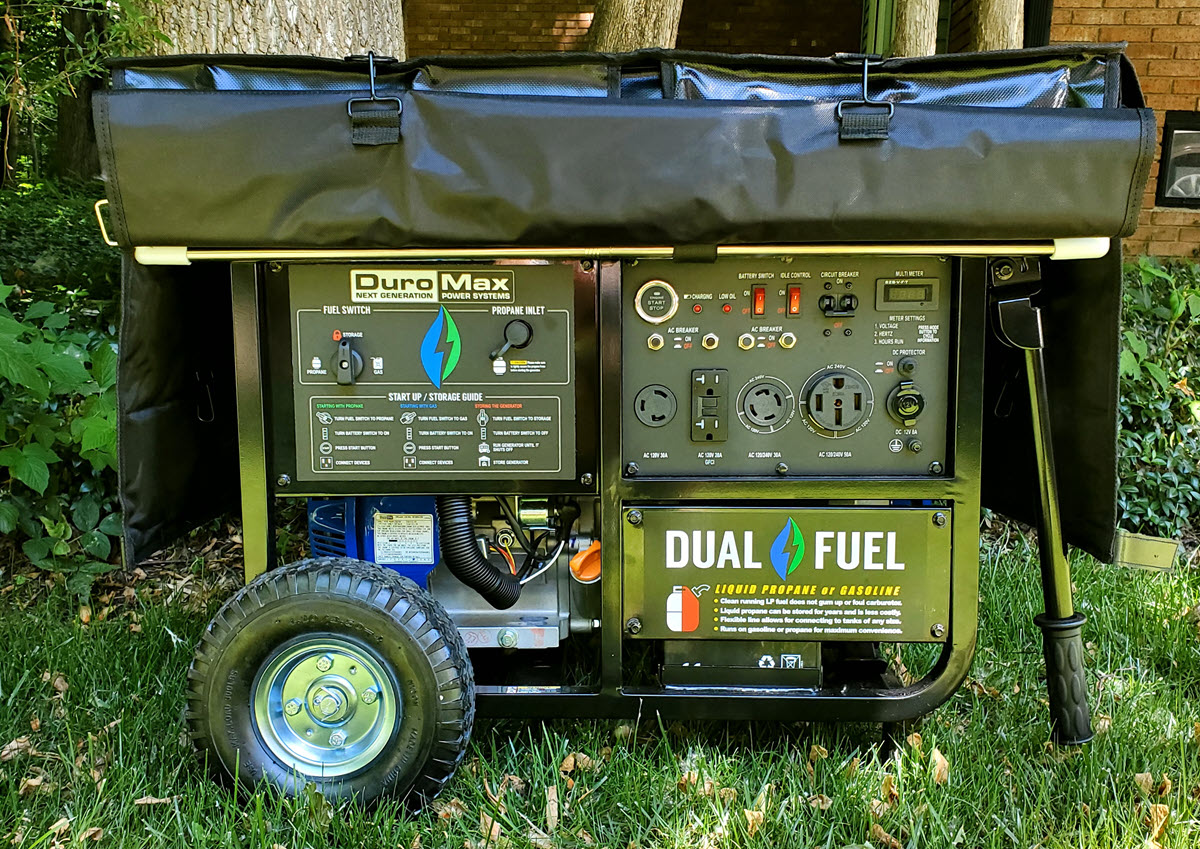
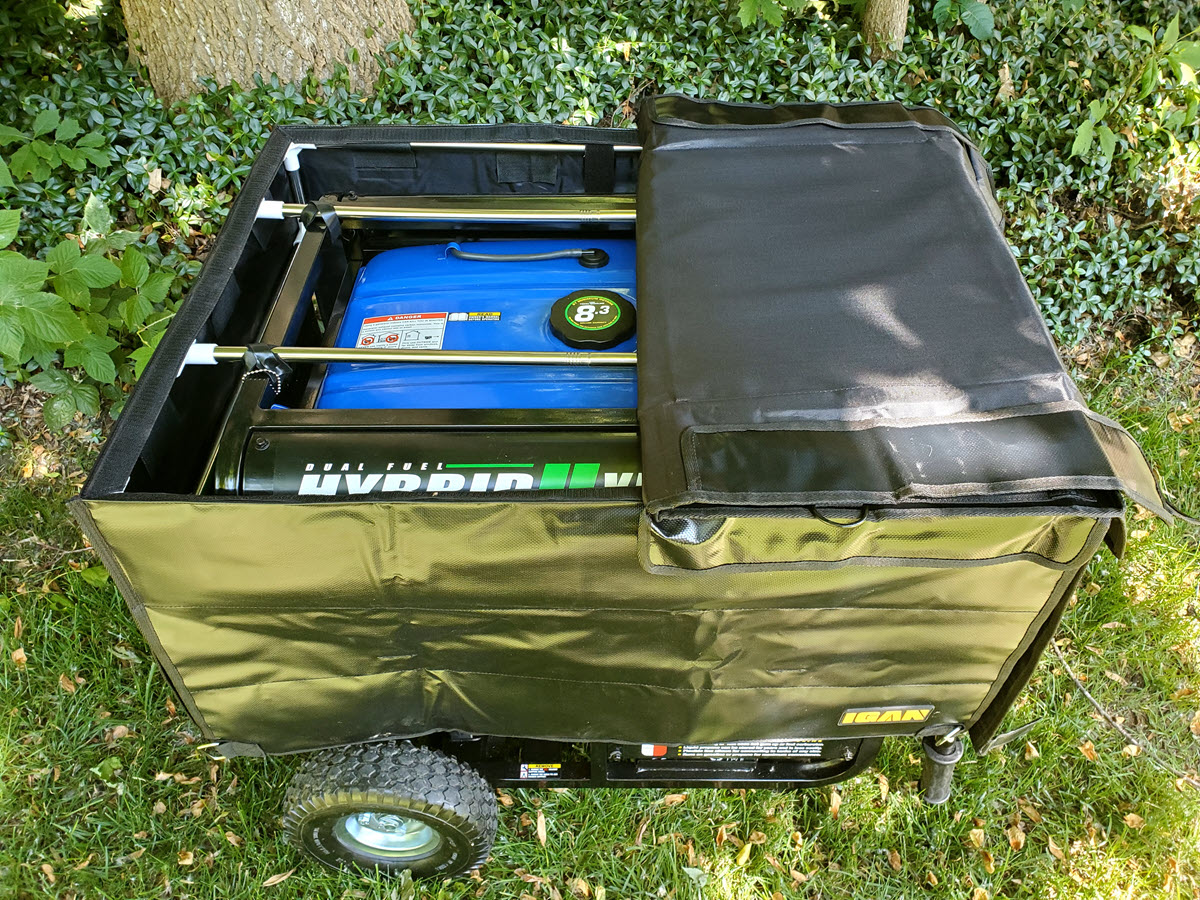
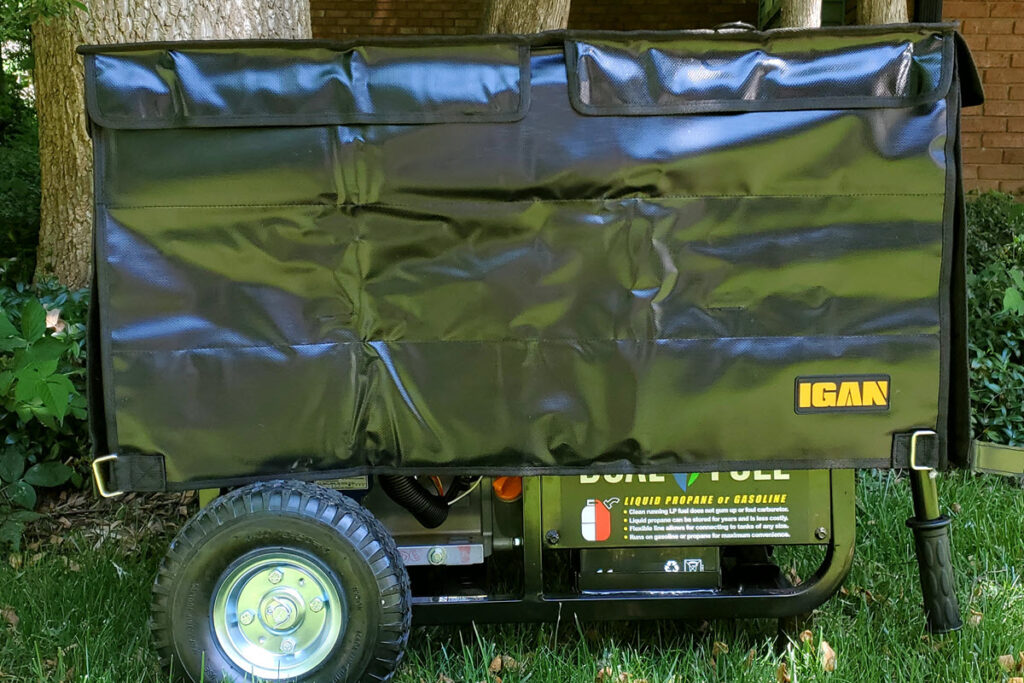
I recently ordered a new DuroMax XP13000EH Dual Fuel Portable Generator. I’m using an IGAN generator cover while it’s running instead of the plywood sheet I used to use with my old generator. The IGAN is a fantastic “generator cover while running” solution designed to be used even when the generator is running!
Can Getting Wet Cause a Generator to Fail to Start?
Yes, getting a generator wet can certainly cause it to fail to start. Water can damage the internal components, leading to electrical problems or corrosion. To avoid “generator won’t start” issues, always store your generator in a dry, covered area, and never operate it in wet conditions.
DIY Homemade Generator Cover While Running
I used to build my own DIY generator cover for my old generator by putting it under a tree during a storm (i.e., when it was raining or snowing). Then, I covered the generator with a large sheet of plywood strapped to the generator’s frame with a couple of red bungee cords. It’s not the prettiest homemade generator cover while running you’ve ever seen, but it worked.
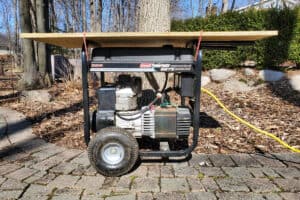
Can A Generator Run In The Rain?
Yes, a generator can run in the rain if it does not get wet. That means you should only run your generator in a dry, well-ventilated location. A popular option is to use a generator tent or a running generator cover to keep your generator dry while running it in wet or snowy conditions.
Are Generators Waterproof?
No, generators are not waterproof and should always be kept dry, even during storage. If you need to use your generator in the rain or snow, follow the manufacturer’s safety guidelines.
I also recommend using a specially designed generator tent or running generator cover to help protect it from rain or snow.
Will Rain Ruin A Generator?
Yes, rain will ruin a generator, even when it’s not running. Rust, insects, and dirt can all significantly shorten the life of your generator.
An inexpensive PVC waterproof storage cover will help protect it when stored outside. However, you’ll need a specially designed generator tent or running generator cover to protect your generator from rain or snow while it’s running.
Another thing that will ruin your backup power source is the lack of proper generator maintenance.
*Warning: Never run a gasoline, diesel, propane, natural gas, or any other fuel-powered generator in a house, attached garage, or close to any other living area because all fuel-powered generators produce deadly carbon monoxide gas when running, including propane generators. Please check out our other Generator Safety Tips.
What should I do if my generator gets wet?
First, shut off the generator and disconnect all power cords. Move it to a covered space with good airflow. Remove the spark plug and let all components dry completely. Contact a certified technician for inspection before restarting.
How do I safely run my generator in rainy weather?
Place your generator on elevated ground under a specialized running cover with proper ventilation. Ensure the cover has heat resistance and dedicated access panels. Keep all electrical components and control panels completely dry during operation.
What’s the safest way to protect my generator during storage?
Store your generator in a climate-controlled space on a raised platform. Use a weatherproof PVC cover designed for storage. Perform monthly maintenance checks and run the generator briefly to prevent fuel system issues.
How can I maintain proper airflow with a generator cover?
Position your generator with three feet of clearance on all sides. Select a cover with integrated ventilation ports and exhaust openings. Monitor temperature during operation to prevent overheating. Regularly check that vents remain unobstructed.
What should I check before running a generator after it gets wet?
Examine all electrical connections for moisture damage. Test the ground fault circuit interrupter (GFCI) outlets. Verify fuel system integrity. Ensure the exhaust system is completely dry. Start the generator in economy mode for initial testing.
How do I protect my generator from snow?
Create an elevated platform using weather-resistant materials. Install a specialized winter-rated generator tent. Clear snow accumulation regularly from the cover and surrounding area. Monitor ventilation paths for ice formation.
What should I look for in a generator cover?
Select covers with flame-resistant materials and reinforced seams. Look for built-in ventilation systems and control panel windows. Choose models with secure anchoring points and weather-sealed access panels.
How often should I maintain my generator’s weather protection?
Conduct weekly visual inspections during regular use. Check cover integrity monthly during storage. Replace weatherstripping seasonally. Verify ventilation system operation before each use. Update weather protection equipment annually.
What’s the ideal setup for emergency generator operation?
Create a dedicated concrete pad with drainage. Install permanent overhead protection. Maintain proper distance from structures. Ensure accessible power cord routing. Set up battery-powered carbon monoxide detectors nearby.
How can I extend my generator’s lifespan in high humidity?
Apply moisture-resistant coating to external components. Install humidity indicators. Use marine-grade electrical connections. Perform corrosion checks quarterly. Schedule professional maintenance seasonally.
Having problems despite your best efforts? Learn how to troubleshoot your portable generator
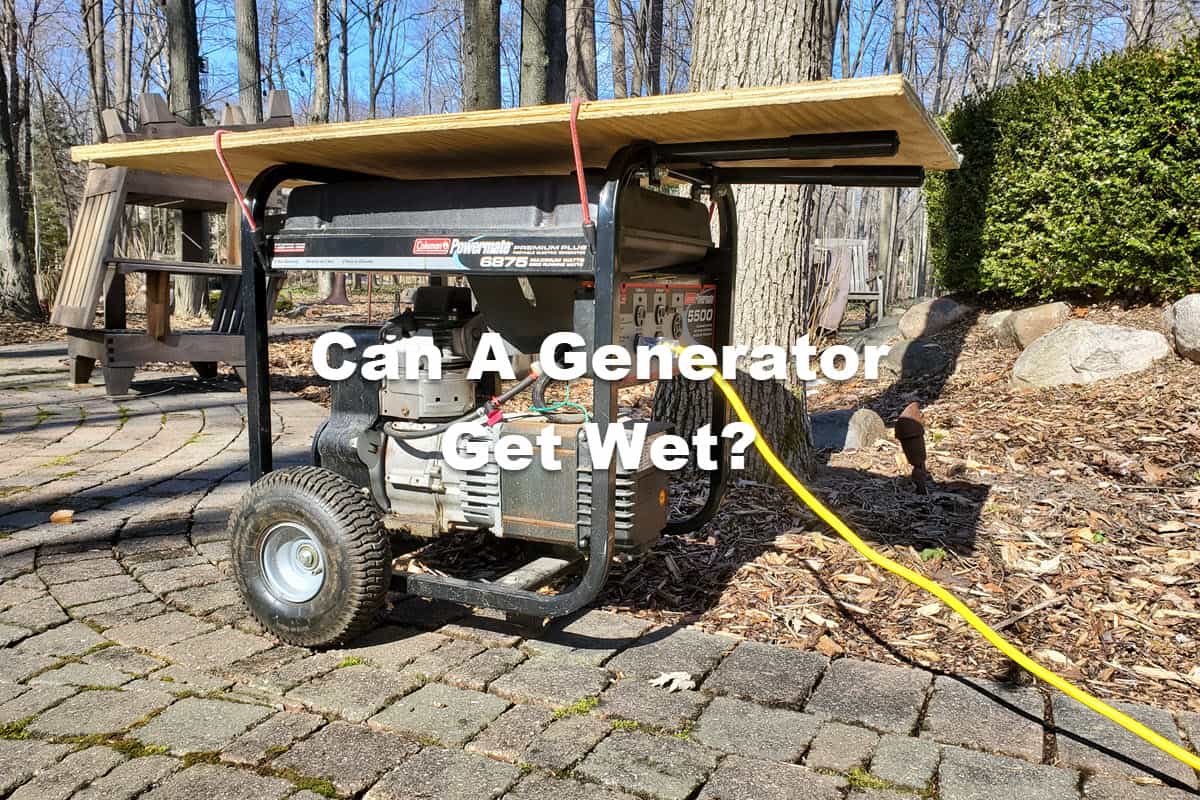
Leave a Reply